Watch our “Ha Giang Loop Travel Guide” video
Getting to Ha Giang City
The Ha Giang Loop starts in Ha Giang City, the capital of the equally named province, located approximately 6 hours away from Hanoi by road transportation.
From Hanoi to Ha Giang
To get from Hanoi to Ha Giang City , which lacks a train station or airport, road travel is the only option for covering the 300 km distance. There are several ways to embark on this journey:
- Standard Sleeper Bus: Opting for a night journey allows you to save daytime travel hours. You can choose a standard sleeper bus, arriving in Ha Giang between 4 and 5 in the morning. After a brief rest, you can start the Ha Giang Loop. The cheapest buses are available for around 250,000 VND (10 USD).
- VIP Sleeper Bus: For a slightly higher price of around 350,000 VND (15 USD), you can upgrade to a VIP sleeper bus offering more spacious and comfortable seating arrangements.
- Limousine Bus: If you prefer daytime travel, there are comfortable limousine buses departing from Hanoi between 6 and 7 in the morning. These buses arrive in Ha Giang around 1 PM, giving you the option to either start your Ha Giang Loop immediately or spend the rest of the day relaxing in the Ha Giang City area.
From Sapa to Ha Giang
Direct buses operate between Sapa and Ha Giang, offering a convenient option. The journey typically takes around 6.5 hours and costs approximately 300,000 VND (13 USD).
From other destinations
It is important to note that Ha Giang City does not have direct connections with other major tourist destinations. Coming from places like Ninh Binh, Halong Bay, or Cat Ba you will need to return to Hanoi first, as there are no direct routes to Ha Giang City. Even if you come across “direct tickets” to Ha Giang, they will invariably involve a transit through Hanoi.
Getting around the Ha Giang Loop
Driving motorbike
The Ha Giang Loop originally gained popularity as a motorbike route, and it remains the most thrilling option. Many backpackers opt to rent a motorbike and embark on this cool adventure, enjoying the freedom to explore at their own pace and staying in affordable local homestays.
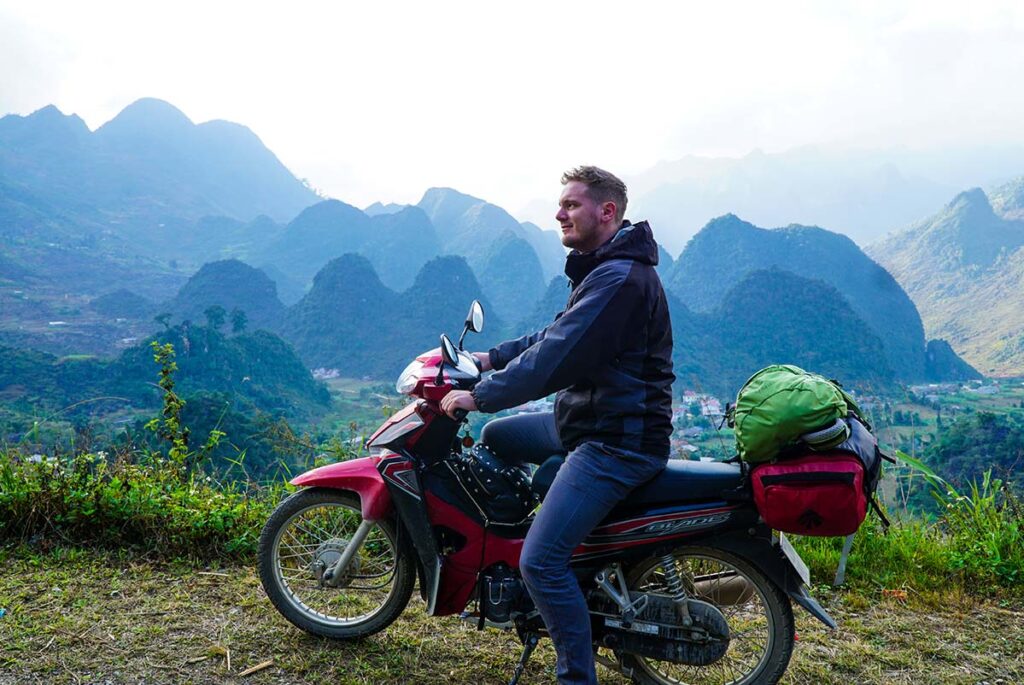
However, it’s important to note that the roads in Vietnam, particularly in Ha Giang, can be challenging. If you lack experience or confidence in driving, it is not recommended to attempt this route yourself. Additionally, it’s crucial to have a valid motorbike license with an International Driving Permit (IDP) to avoid fines from the police. It’s also essential to check your insurance coverage in case of an accident.
Easy rider – on the back of a motorbike
If you desire the thrill of experiencing the Ha Giang Loop by motorbike but prefer not to drive yourself, hiring an easy rider is an excellent alternative. Traveling as a passenger on the back of a motorbike with an experienced guide is much safer.
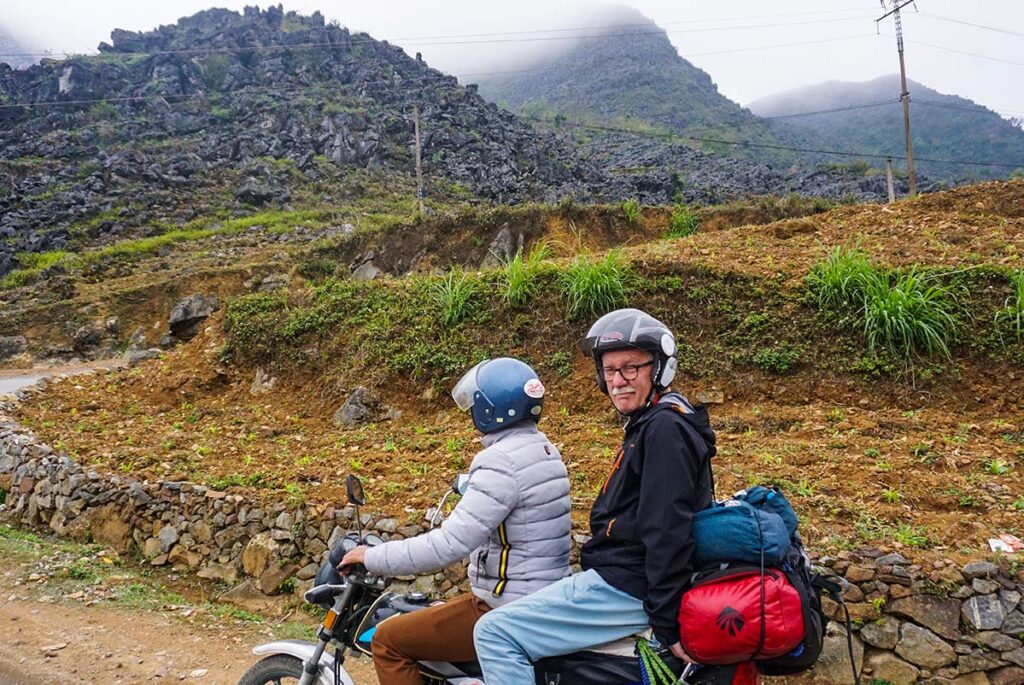
Easy riders are familiar with the area, can help you communicate with locals, and know the hidden gems that you might not discover on your own. This option allows you to relax, enjoy the scenery, and soak up the surroundings without the need to focus on driving.
Car
For those who have never been on a motorbike before and feel overwhelmed by the idea of going through a mountainous region in a foreign country, traveling the Ha Giang Loop by car is a practical solution.

It offers the same route experience but provides additional protection from the sun, wind, rain, and cold. Sitting comfortably in a car seat for a few hours is often more preferable for some travelers. You can still enjoy the breathtaking landscapes and cultural attractions while enjoying the convenience and comfort of a car.
Weather & best time to do the Ha Giang Loop
When planning your trip to the Ha Giang Loop, it’s essential to consider the weather conditions and choose the best time to visit. Overall, Ha Giang showcases its beauty throughout the year, so there is no wrong time to visit. Here’s a breakdown of the different seasons in Ha Giang:
December – January – February
These months mark the dry season with minimal rainfall. However, they are also the coldest months of the year. It’s advisable to dress warmly, particularly in the evenings when temperatures can drop significantly. Some homestays might be chilly at night, so bringing extra layers is recommended.
March – April – May
This period is considered one of the best times to visit Ha Giang. March and April are particularly dry, and the cold weather of the previous months subsides. Expect warm and pleasant weather with limited rainfall during these months.
June – July – August
These months are characterized by heavy rainfall and high temperatures, making it the rainy and hot season in Ha Giang. While it may not rain all day, when it does, the downpours can be intense. The roads can become more treacherous for driving during this time, so caution is advised.
September – October – November
September still experiences some rainfall, but as the month progresses and enters October, the rainfall lessens. October and November are considered two of the best months to embark on the Ha Giang Loop. The cold winter months have yet to arrive, and the weather remains favorable for exploration.
Ha Giang Loop map
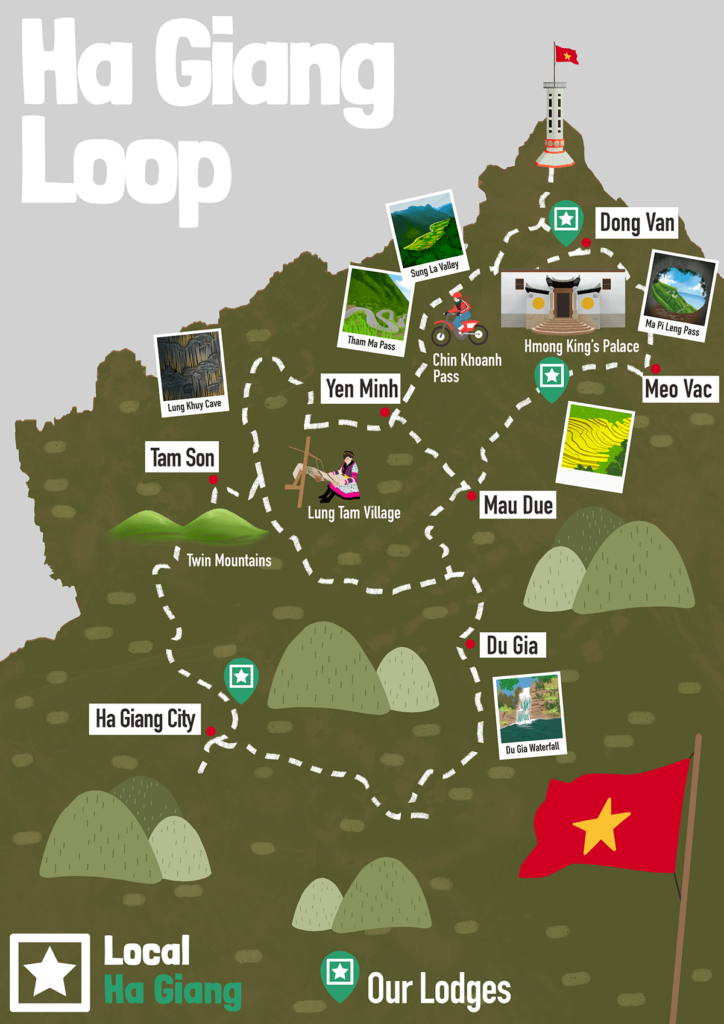
20 highlights of the Ha Giang Loop
These are the sights and highlights you can visit during the Ha Giang Loop. They are numbered not in the way of which is the best, but rather in the order you will encounter them along the route, with number 1 being the first and 25 being the last.
Please note that many of the highlights of the Ha Giang Loop are not listed here, as they include the small towns, local markets, countless stunning views, and encounters with smiling ethnic minorities.
1. Dong Van Plateau
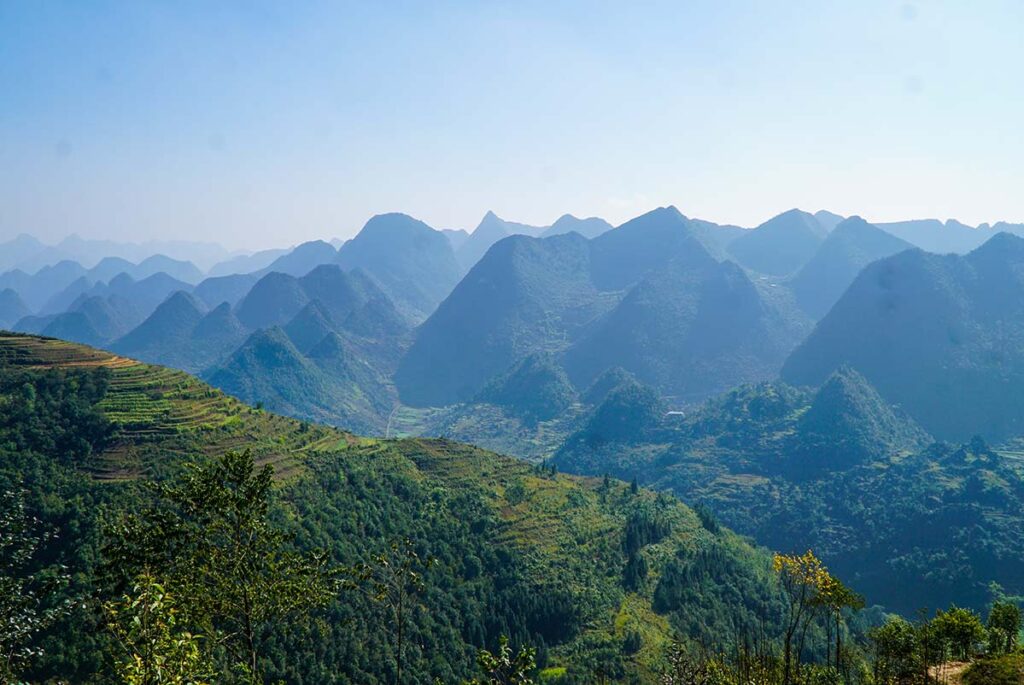
The Dong Van Plateau, a UNESCO Geopark, serves as the stunning backdrop for the entire Ha Giang Loop, encompassing the districts of Dong Van, Yen Minh, Meo Vac, and Quan Ba. Characterized by its vast limestone formations, breathtaking mountain scenery, and a rich tapestry of ethnic minority cultures, the plateau sits at an elevation of 1,400 to 1,600 meters, offering a range of natural wonders and deep canyons that captivate travelers.
2. Minh Tan Stream
Located approximately 50 km from Ha Giang City on the National Highway 4C, this small stream has gained popularity as a refreshing spot for people to cool off and take a dip during hot days along the Ha Giang Loop.
3. Quan Ba Pass
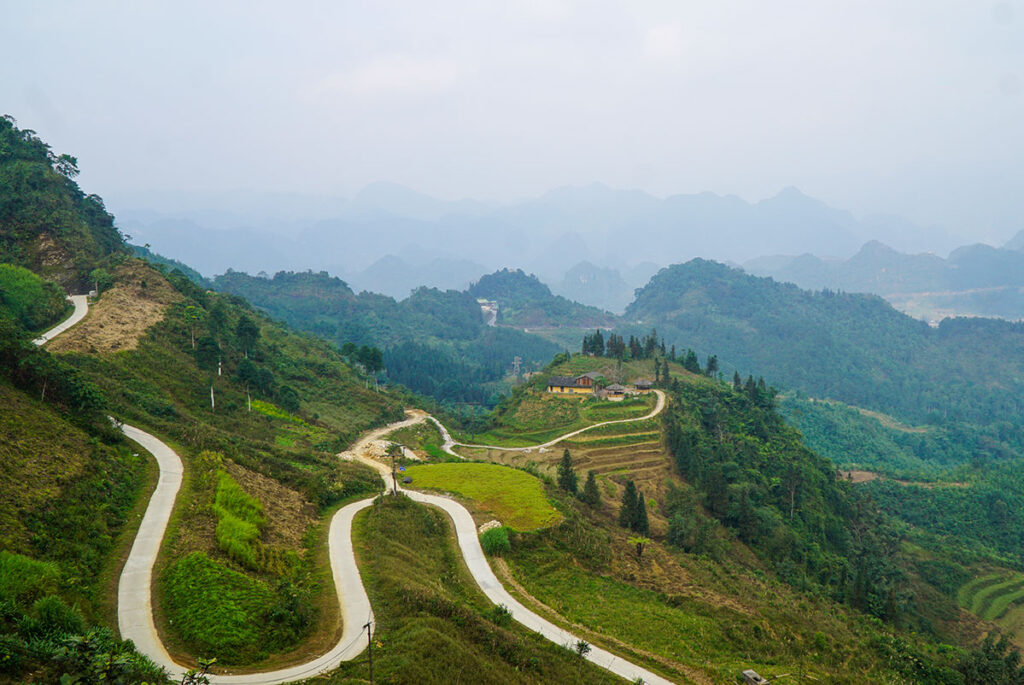
Serving as the first true mountain pass on the Ha Giang Loop, Quan Ba Pass, also known as Quan Ba Heaven Gate, offers stunning views. At the top, you’ll find a small coffee shop where you can indulge in the breathtaking scenery, savor a cup of coffee, and take a well-deserved break.
4. Twin Mountains
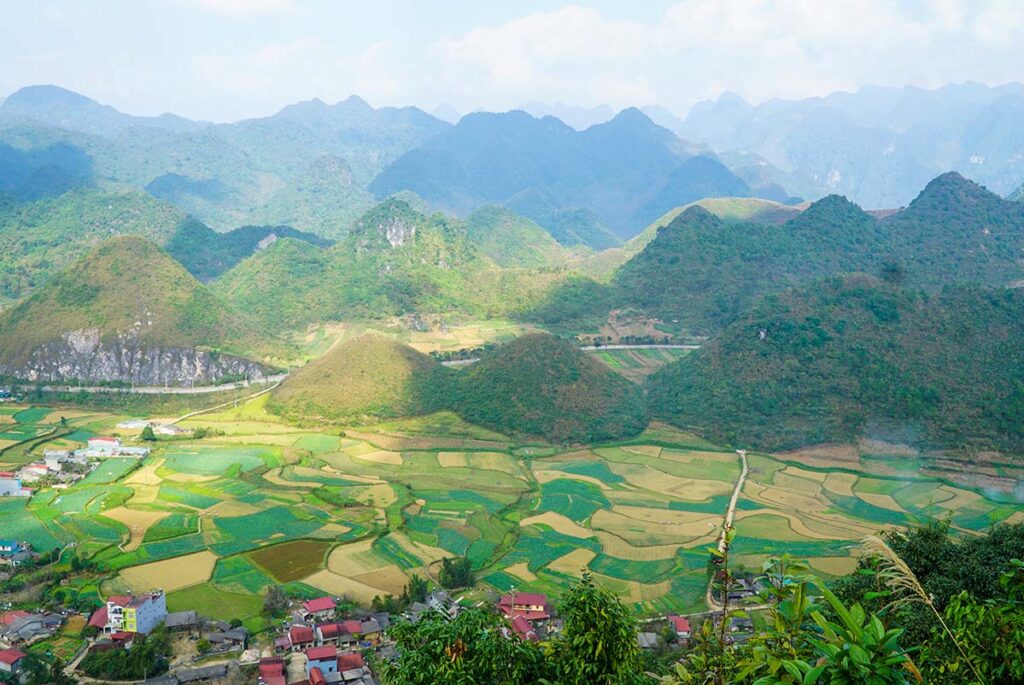
As you descend from Quan Ba Pass, halfway down the road, you’ll discover a parking area with stairs leading to a viewpoint showcasing the magnificent Twin Mountains. These two identical mountains, also known as Fairy Breast Mountains, present a picturesque sight worth capturing.
5. Lung Khuy Cave
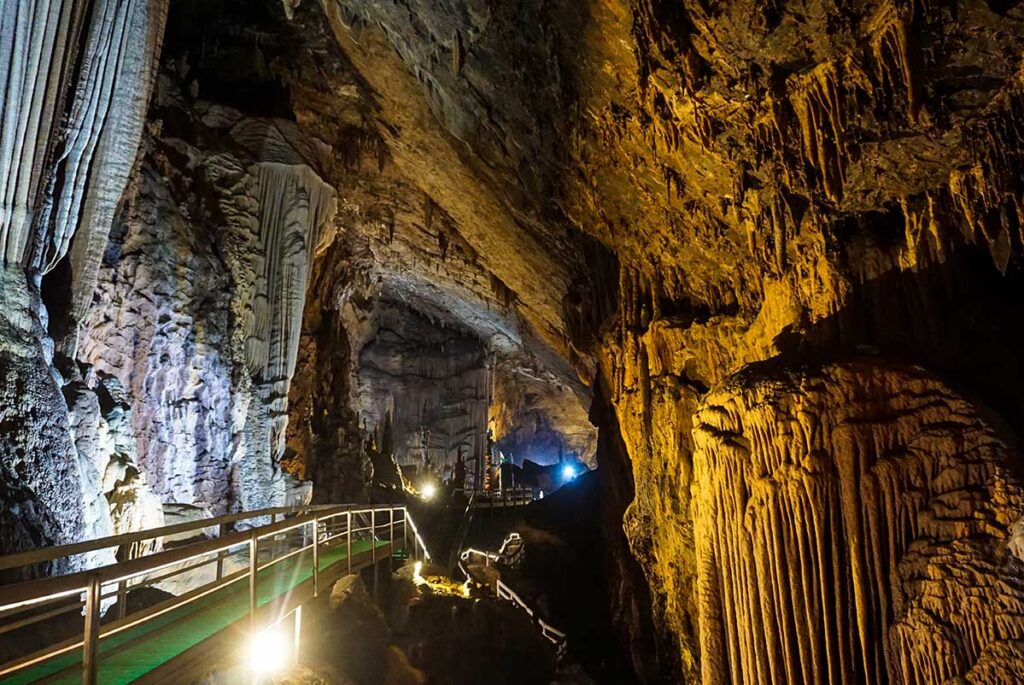
If you are traveling from Ha Giang City to Dong Van it might take too much time. But if it fits, stop at Lung Khuy Cave and admire the fascinating stalactites and stalagmites. Although the cave might not be the most impressive cave in the country, the road that leads to this place is already worth it.
6. Lung Tam Village
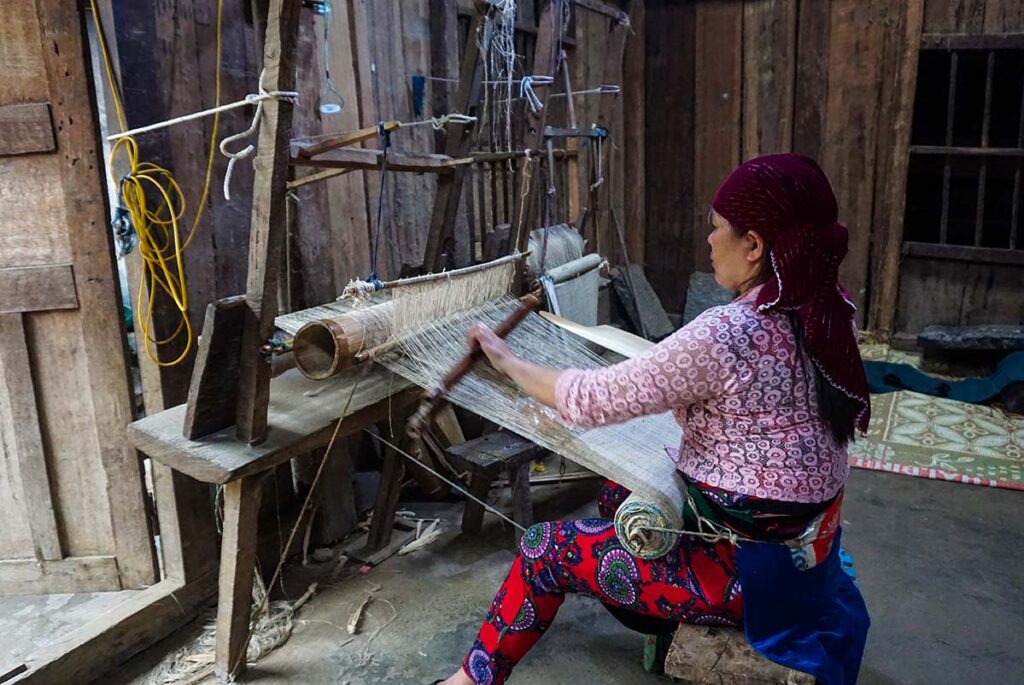
Immerse yourself in the traditional practices of the Hmong ethnic group at Lung Tam Village, renowned for its rich heritage of weaving. Witness firsthand the meticulous process of creating exquisite brocade and linen pieces using flax fibers.
7. Yen Minh Pine Forest
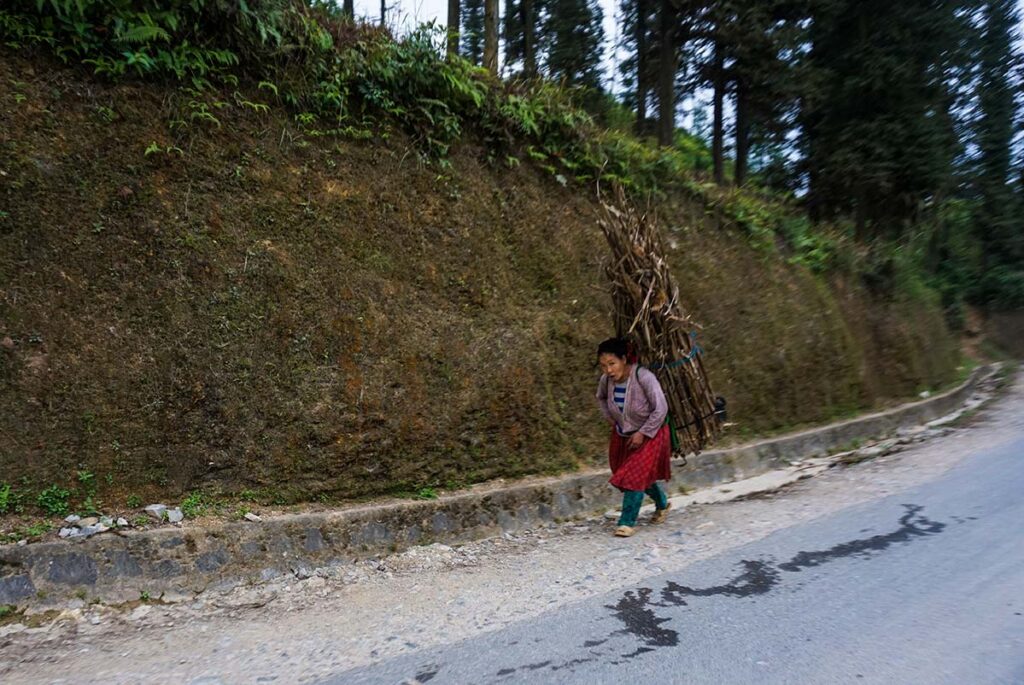
As you continue your journey along the Ha Giang Loop, you’ll encounter a sign offering two routes both leading to Yen Minh Town. The shorter route is going through the mountains and the other to a Pine Forest. Opting for the longer road will take you to the refreshing Pine Forest, where you can take a break amidst the shade of towering trees and enjoy the serene atmosphere.
8. Tham Ma Pass
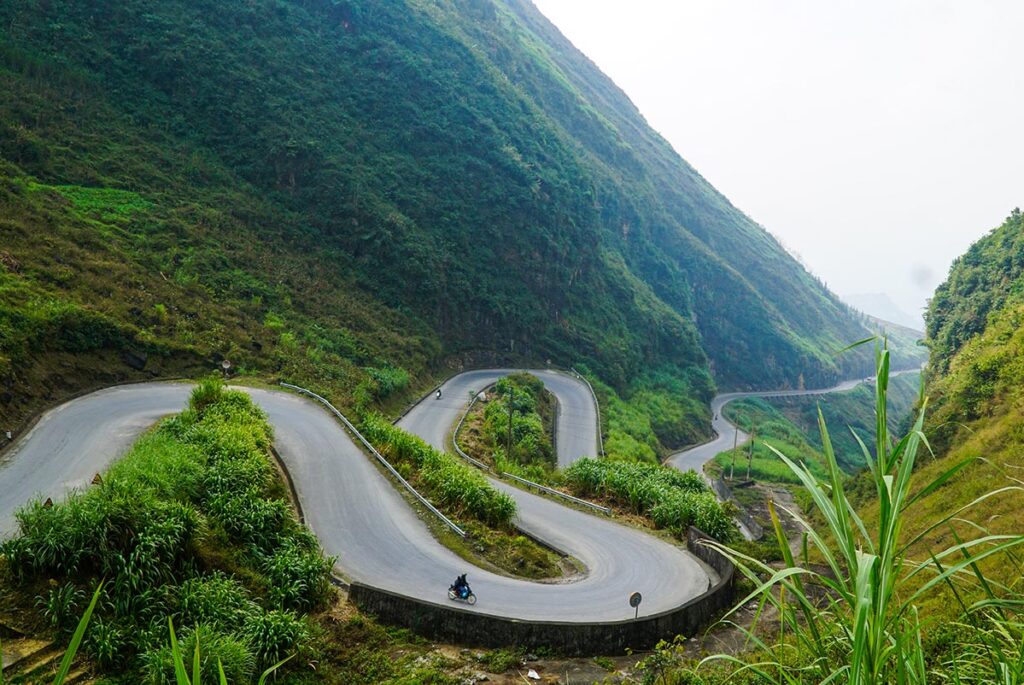
Known as one of the most iconic mountain passes along the Ha Giang Loop, Tham Ma Pass provides a picturesque setting for capturing photographs. You’ll often find local children from nearby ethnic minorities carrying flowers.
9. Chin Khoanh Pass
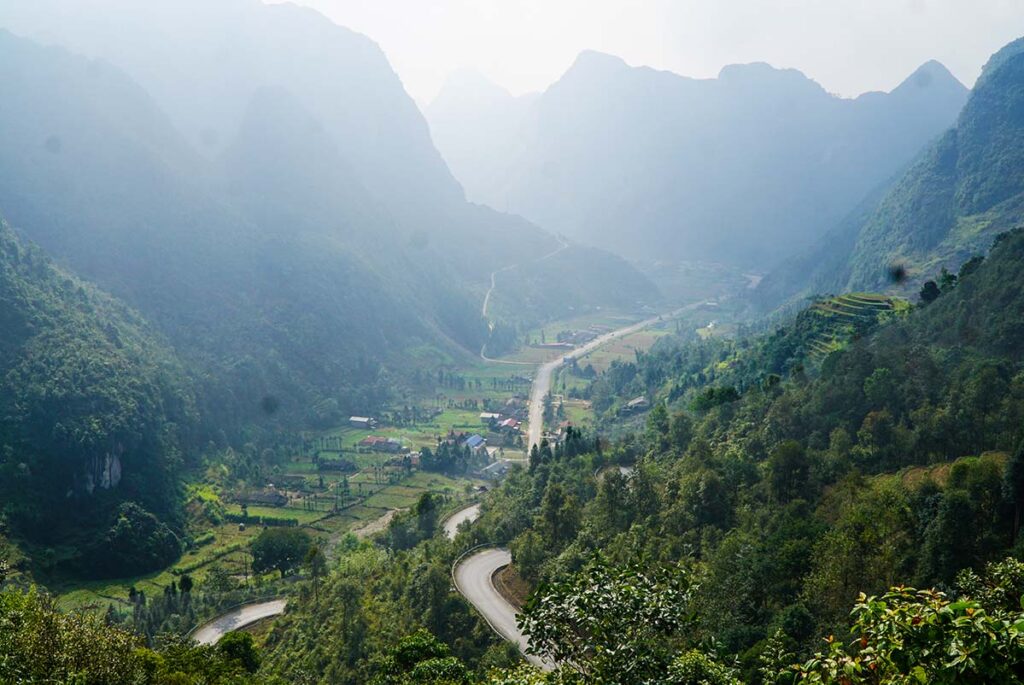
Prepare for a unique experience on the Chin Khoanh Pass, also referred to as Chín Khoanh ramp or 9 ramp. This winding pass features nine distinct turns, offering captivating views of the surrounding landscapes that are sure to leave you in awe.
10. Sung La Valley
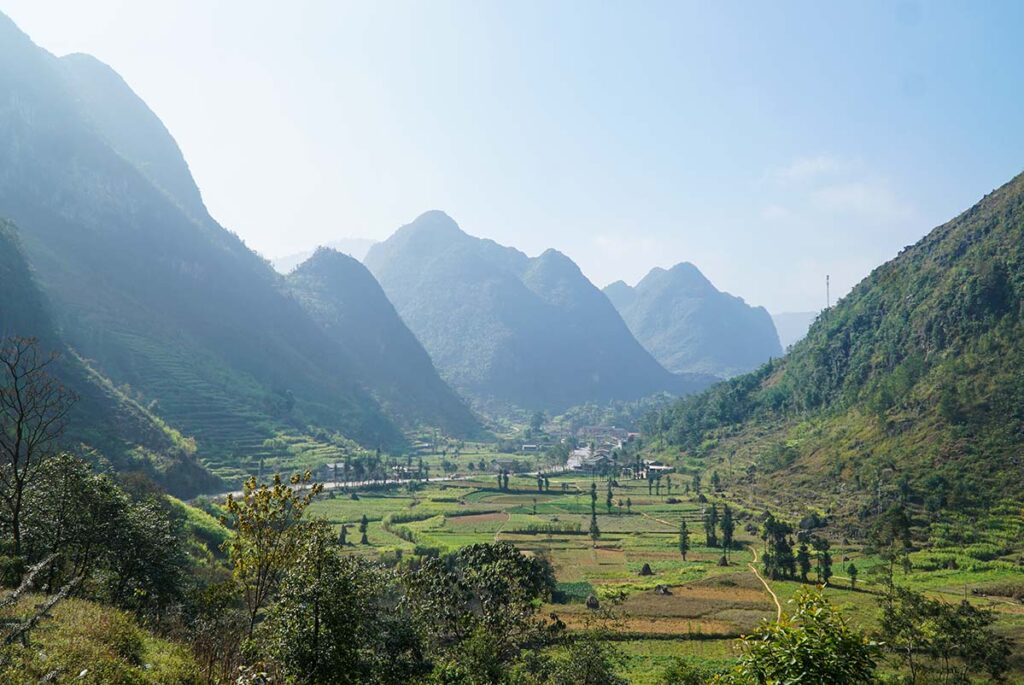
After traversing the pass, you’ll enter the beautiful Sung La Valley, which truly comes alive during the blooming season when white and pink flowers blanket the valley.
Don’t miss the opportunity to explore the famous House of Pao, renowned for its appearance in a Vietnamese show. These remarkable ethnic minority houses, some of which are over 70 years old, are well worth a visit.
11. Pho Bang old town
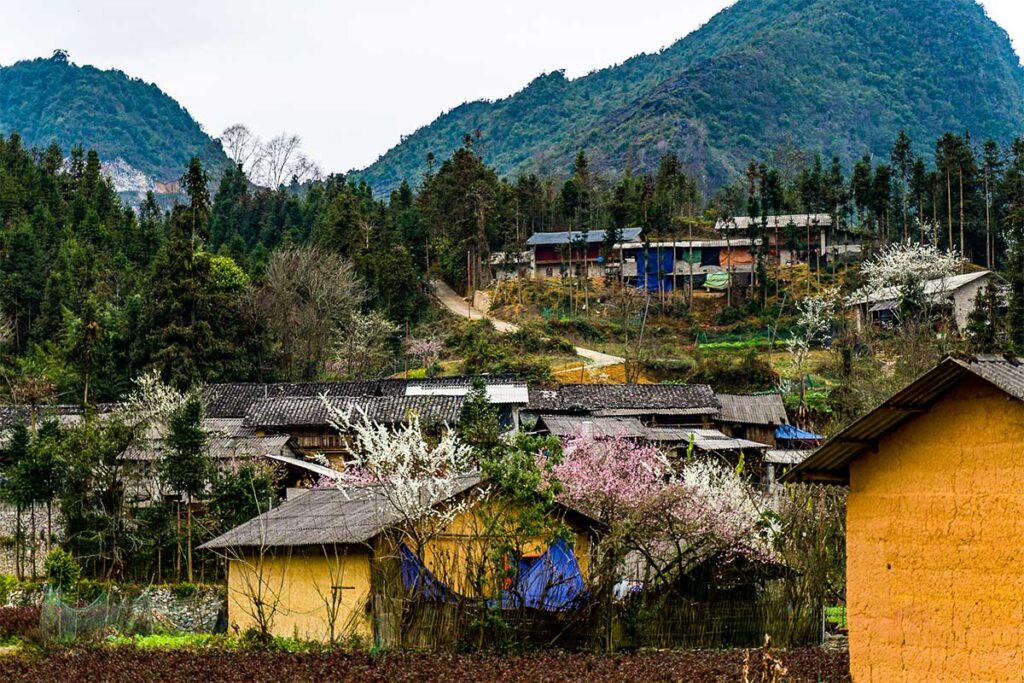
For a unique off-the-beaten-track experience, venture towards Pho Bang Village. Here, you’ll discover beautiful ethnic houses nestled amidst stunning scenery. While there might not be many other attractions in the area, the tranquil ambiance and picturesque surroundings make it a worthwhile stop on your journey.
12. Hmong Kings Palace
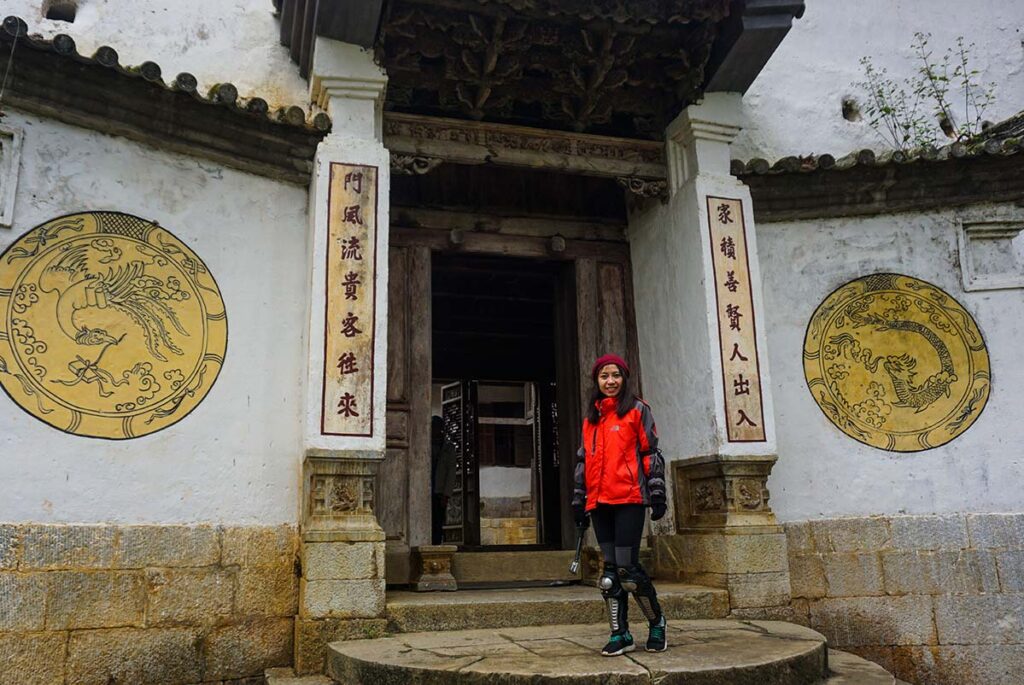
Step into history at the Hmong Kings Palace, the former residence of King Vuong Chinh Duc, recognized as the king of the H’Mong ethnic people by the Ha Giang community in the early 20th century.
Built in 1902, the palace features a massive stone outer wall that once served as a defense against invaders, offering a glimpse into the region’s rich cultural heritage.
13. Sa Phin market
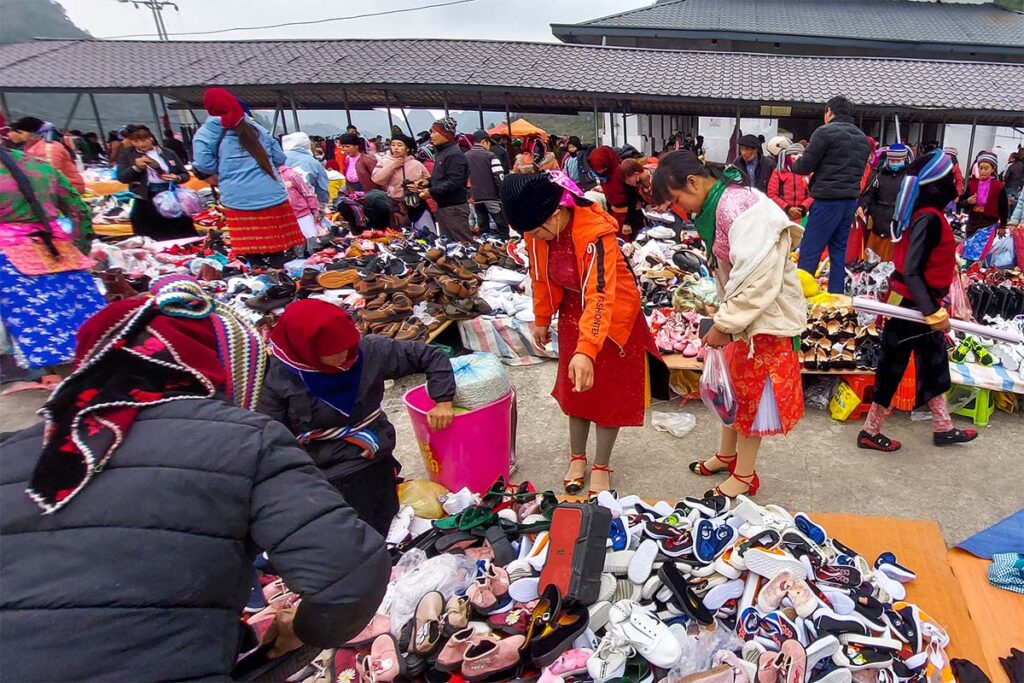
Located just 2 km from the Chinese border, Sa Phin Market is a vibrant and colorful minority market. What makes this market unique is its backward schedule, occurring every six days. The market day shifts each week, meaning if this week the market is held on Sunday, the next week it will be on Saturday and the next week after that on Friday.
14. Dong Van Old Quarter
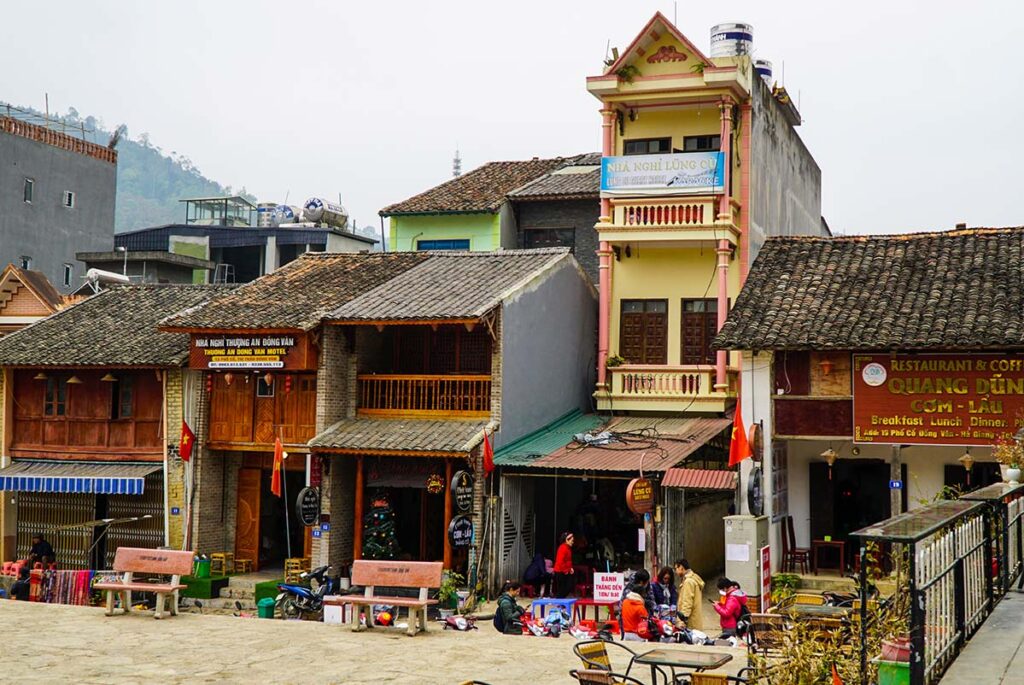
The Old Quarter is the historical heart of Dong Van. Surprisingly cozy and untouched by extensive development, this area is home to quaint old houses dating back to the French colonial era. Many of these heritage buildings have been repurposed into small restaurants and shops catering mainly to travelers.
15. Dong Van Market

Immerse yourself in the vibrant colors and bustling atmosphere of the Dong Van Market. Here, you’ll witness local ethnic communities, including the Hmong, Tay, Nung, and Hoa, dressed in their traditional attire as they gather to sell a wide array of goods. From clothing and farm equipment to household items, phones, chargers, and even livestock, the market showcases the rich diversity of products and cultural exchange.
16. Ma Le village
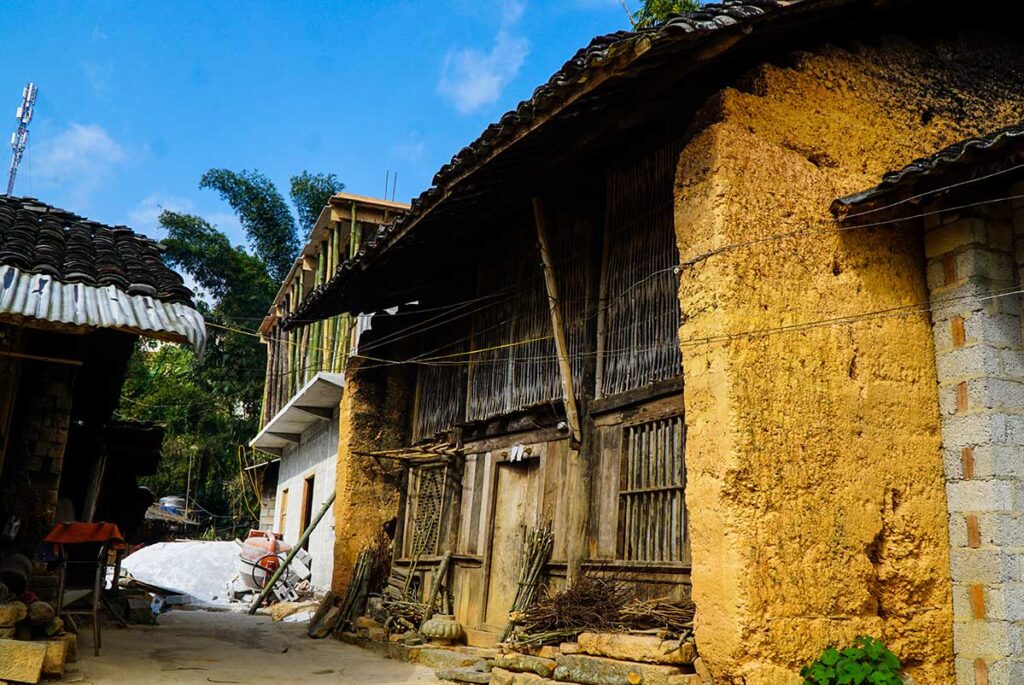
Step into the past as you visit Ma Le Village, a local community of ethnic minorities. The stunning houses, constructed with wood and yellow clay, showcase traditional architectural styles and offer a glimpse into the village’s rich cultural heritage. It’s a truly authentic experience that transports you back in time.
17. Lo Lo Chai Village
Nestled at the foot of Lung Cu, Lo Lo Chai Village is home to the Lo Lo ethnic minority. Resembling Ma Le Village with its yellow clay houses, this picturesque village exudes authenticity and charm. Explore the village’s unique traditions and immerse yourself in the local way of life.
18. Lung Cu Flag Tower
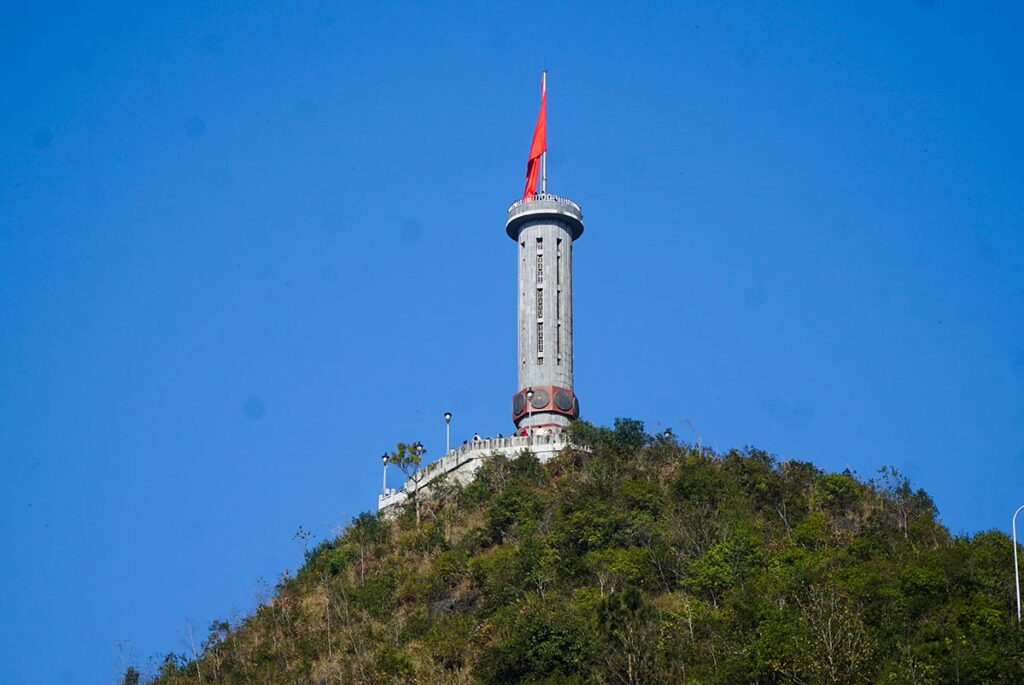
Standing proudly atop a mountain, the Lung Cu Flag Tower marks the northernmost point of Vietnam. This iconic landmark offers breathtaking panoramic views of the surrounding countryside and serves as a symbol of national pride. Climbing to the top rewards you with views of both Vietnam and China.
19. Ma Pi Leng Pass
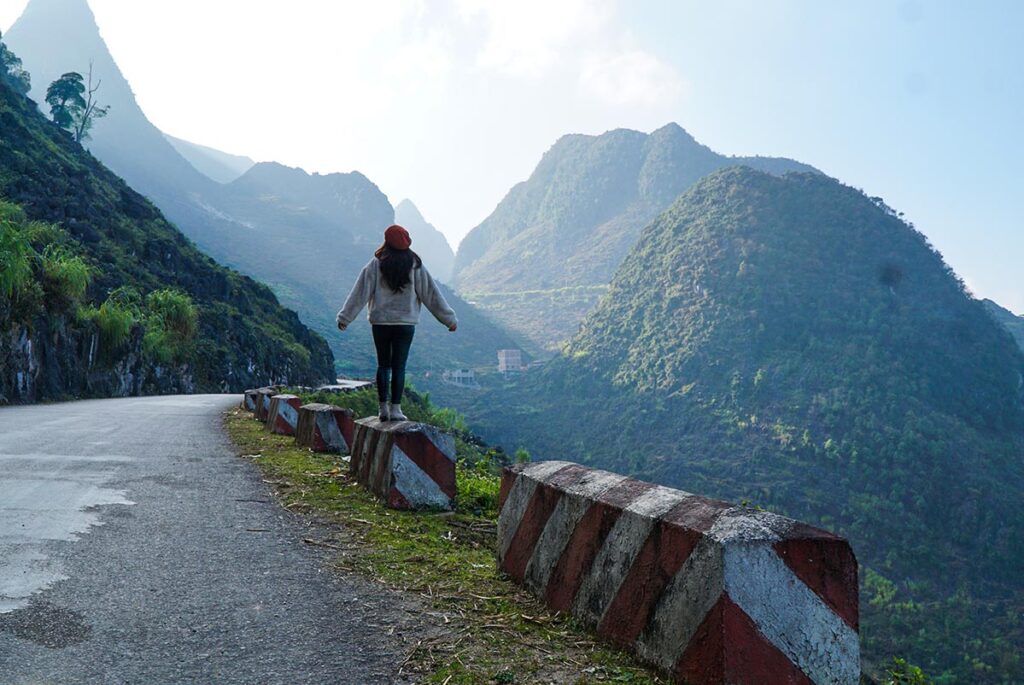
Considered the king of mountain passes in Vietnam, the Ma Pi Leng Pass is a highlight for many travelers. Stretching between Dong Van and Meo Vac, this winding road offers stunning scenery, with steep cliffs that plunge into the river below. Prepare to be captivated by the dramatic landscapes and the sheer grandeur of nature.
20. Nho Que river
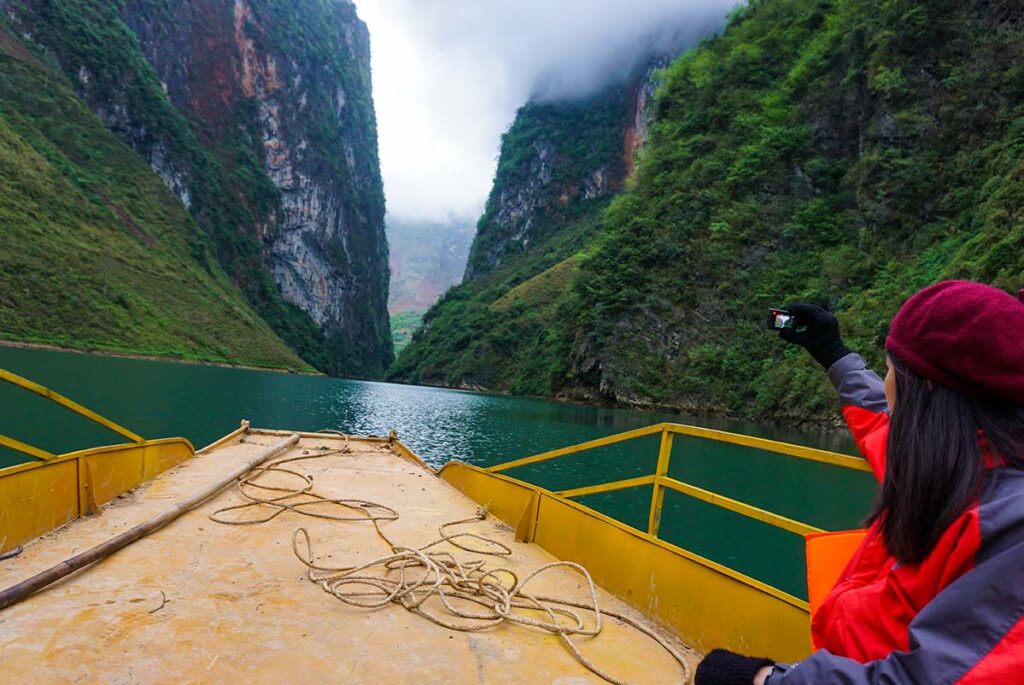
Flowing at the base of the Ma Pi Leng Pass, the Nho Que River adds to the enchanting beauty of the area. Descend to the river and go on a boat trip through the majestic canyon, surrounded by towering cliffs.
21. Meo Vac market
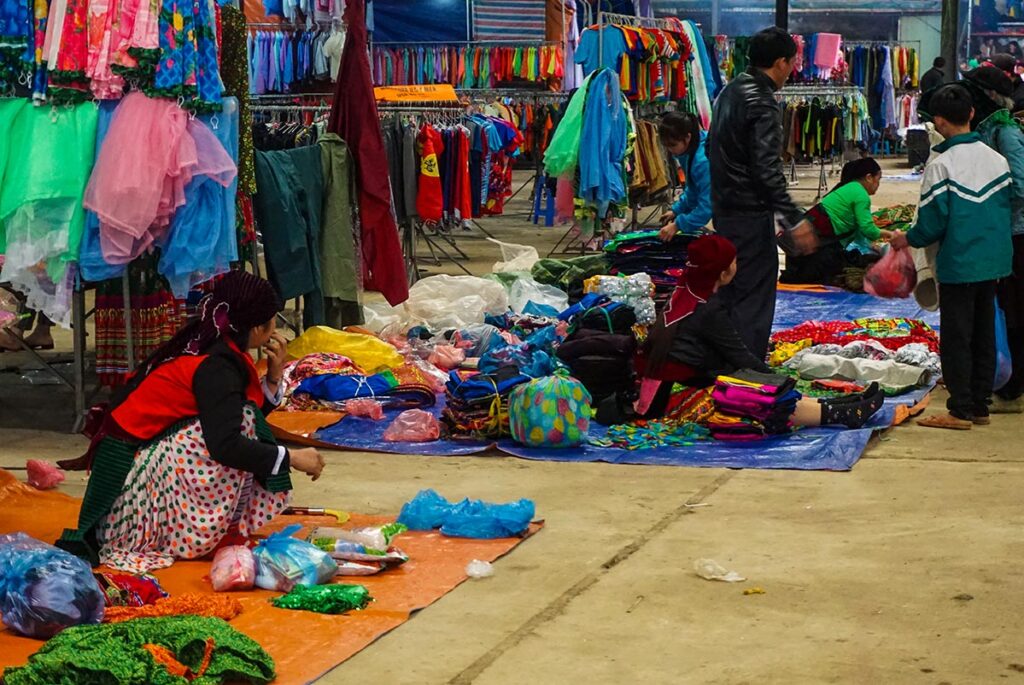
Visit Meo Vac on a Sunday to experience the vibrant and bustling ethnic minority market, the largest in Ha Giang. The market showcases a kaleidoscope of colors as locals adorned in traditional attire trade various local produce, including livestock such as buffaloes, cows, and pigs. It’s an immersive cultural experience that offers a glimpse into the region’s rich diversity.
22. M shape turn View point
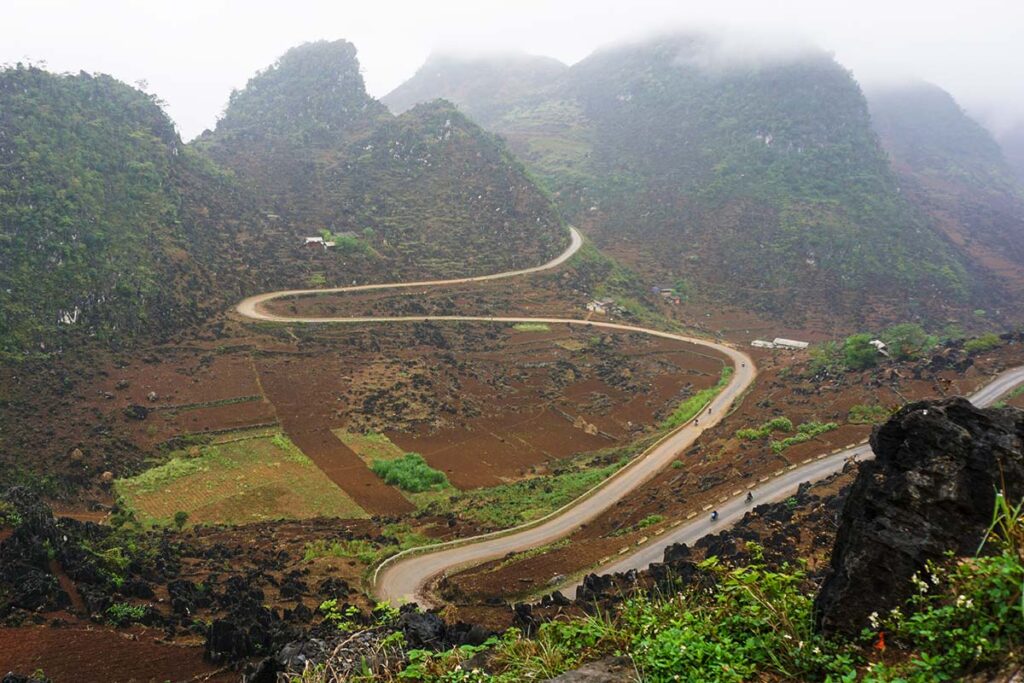
Along the road from Meo Vac to Mau Due, you’ll be treated to some of the most breathtaking mountain scenery on the Ha Giang Loop. While there aren’t specific names for the mountain passes or viewpoints, there is a spot referred to as the M Shape Turn Viewpoint on Google Maps. It’s definitely worth a stop to soak in the awe-inspiring vistas.
23. Mau Due
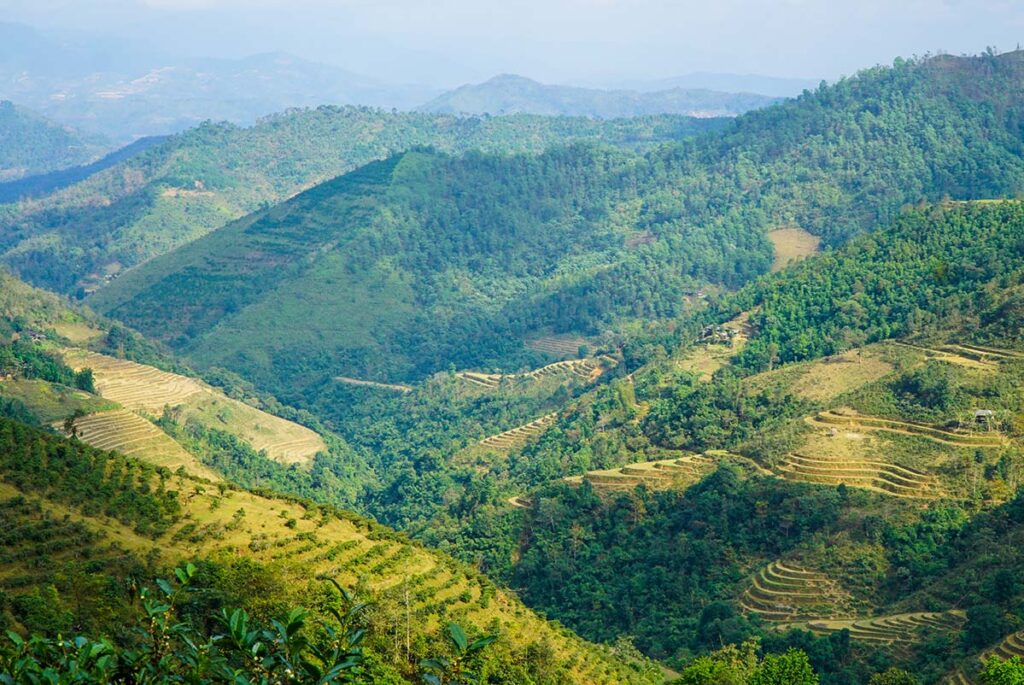
Nestled in the vicinity of Mau Due, you’ll find terraced rice fields, a rare sight along the Ha Giang Loop. These handcrafted paddy fields adorn the slopes of the mountains, complemented by charming small villages. It’s a picturesque and tranquil setting that showcases the harmonious coexistence between nature and the local communities.
24. Lung Ho
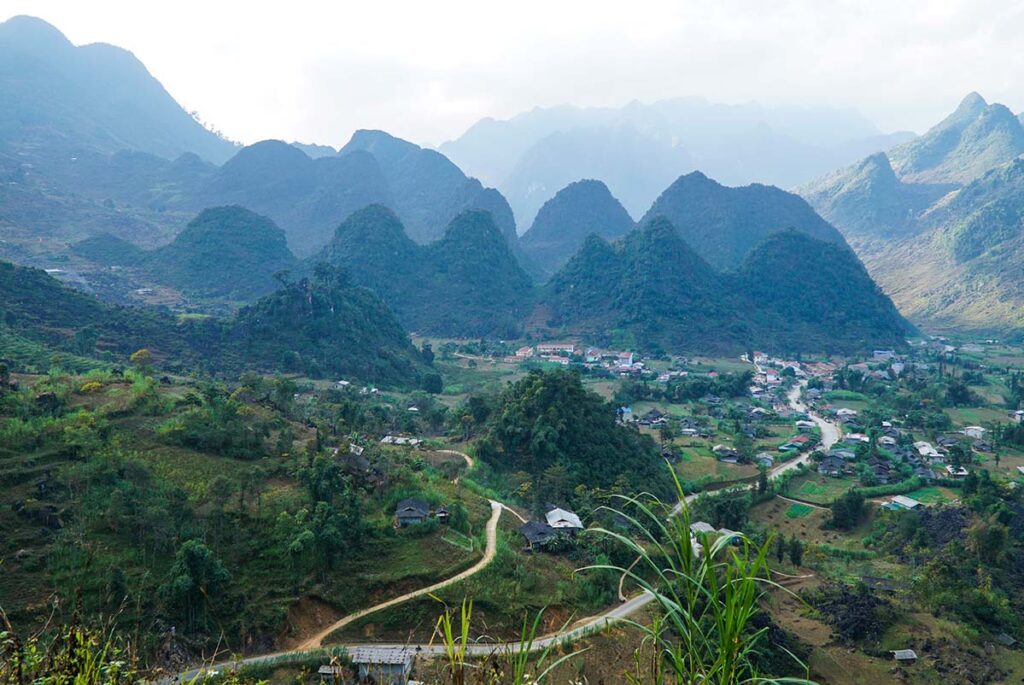
Continuing your journey from Mau Due, you’ll traverse another pass that rewards you with breathtaking views of the valley and distant mountains. The epic vistas from Lung Ho capture the rugged beauty of the Ha Giang region.
25. Du Gia
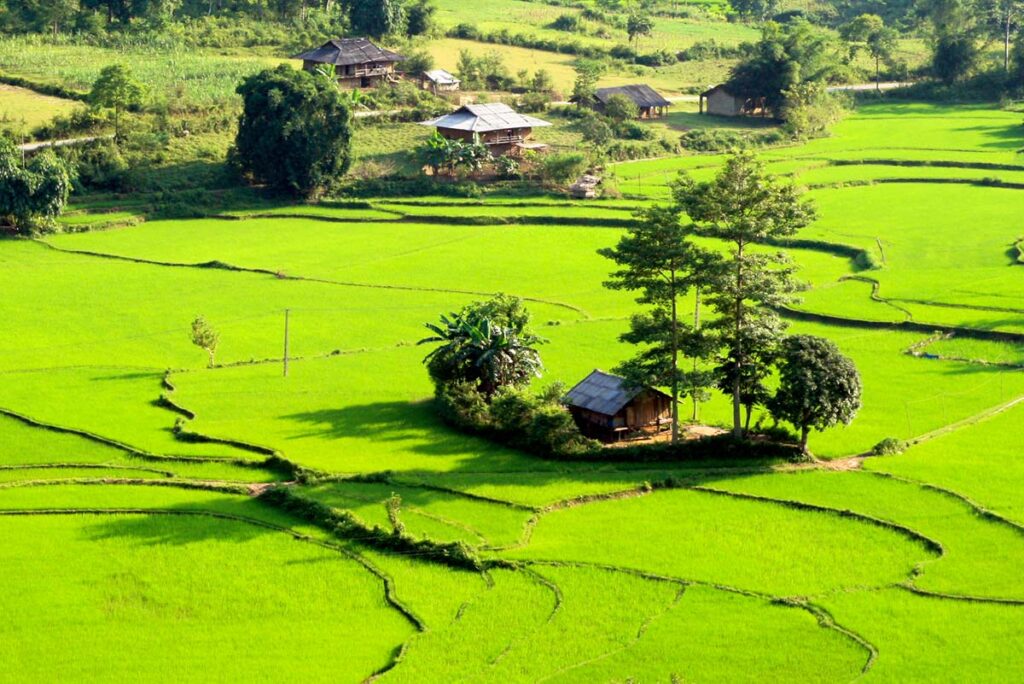
As you approach Du Gia, the scenery undergoes a transition, revealing more lush green valleys instead of towering mountains. Du Gia itself is nestled in a picturesque valley surrounded by stunning rice fields. It’s an ideal place to take a break from driving the Ha Giang Loop and immerse yourself in the tranquility of nature. Don’t miss the opportunity to cool off in the small waterfall.
Ha Giang Loop route
While you can tailor the Ha Giang loop route to your own preferences, completing it in a minimum of three days is highly recommended for a fulfilling experience. The adventure always begins in Ha Giang City. Although the example below suggest a specific order, you’re free to explore in the opposite direction or alter your overnight stays based on your interests.
3 days & 2 nights
Day 1
- Route: Ha Giang – Dong Van
- Distance: 150 km
- Sights on the way: Travel through the beautiful Quan Ba Pass and gaze at the unique Twin Mountains. Continue onto Tham Ma Pass and Chin Khoanh Pass, which both promise memorable views. Explore the historic Sung La Valley, visit the regal Hmong Kings Palace, and wander through Dong Van Old Quarter.
Day 2
- Route: Dong Van – Meo Vac (Via Lung Cu)
- Distance: 75 km
- Sights on the way: Start with a visit to the picturesque Ma Le village, then onto Lo Lo Chai Village. A trip up to Lung Cu Flag Tower is a must for panoramic views. One of the major highlights is the Ma Pi Leng Pass, which offers breathtaking views of the Nho Que river below.
Day 3
- Route: Meo Vac – Ha Giang City
- Distance: 155 km
- Sights on the way: Stop by the unique M shape turn Viewpoint, before proceeding to Mau Due and Lung Ho. End the trip with a relaxing stay in Du Gia, surrounded by serene landscapes.
4 days or longer
If you have an additional day or more, consider spending your first night in Yen Minh. This allows for more leisurely exploration, including visits to various villages and the Lung Khuy Cave, which might be skipped in the tighter three-day itinerary.
Around the Dong Van area you can easily add an extra day for trekking opportunities that allow you to make hikes in the region’s breathtaking beauty.
Add a night in Du Gia is a treat for those looking to unwind. The area exudes tranquility, with its serene rice fields and the alluring nearby waterfall. Taking a dip in its refreshing waters is the perfect way to relax, marking a peaceful end to your Ha Giang Loop route.
Recommended accommodations along the Ha Giang Loop
Homestay vs Hotel
Homestays: Homestays offer a more local and authentic experience, allowing you to immerse yourself in the culture and traditions of the region. They are often cheaper than hotels, making them a budget-friendly option.
However, it’s important to note a couple of things. Firstly, during the winter season, some homestays may lack adequate heating, so be prepared for potentially colder temperatures. Secondly, certain homestays may be popular among large backpacker groups looking for a party atmosphere, which can detract from the authentic experience you might be seeking.
Hotels: On the other hand, hotels in Ha Giang provide a more comfortable stay, particularly during the winter when they often have amenities like heating or air conditioning to combat the weather elements.
However, it’s worth noting that most hotels in Ha Giang are still relatively basic, as the tourism infrastructure is still developing. To ensure a satisfactory stay, be sure to thoroughly research and check the facilities and reviews of the hotel you choose.
Recommended accommodations
When exploring the Ha Giang Loop, choosing the right accommodations enhances your experience. We suggest spending a night at a homestay to connect with local families and their traditions. For those seeking more comfort, consider booking a lodge or hotel for another night. For a full list of our top picks, refer to “best homestays in Ha Giang” and “where to stay along the Ha Giang Loop“.
Activities along the Ha Giang Loop
Most people tend to focus solely on the Ha Giang Loop by motorbike or car, overlooking other exciting activities available in the region.
Trekking
Embarking on a trekking adventure in Ha Giang allows you to venture off the beaten path, meandering through mountains and villages. Immerse yourself in the authentic lives of local ethnic minorities while relishing in breathtaking landscapes.
Kayaking
Although a bit off the beaten track, Ha Giang offers opportunities for kayaking. Plan some extra time to explore the serene rivers and lakes, indulging in a peaceful and immersive experience.
Boat tour
Take a break from the road and embark on a short boat trip along the Nho Que River at Ma Pi Leng Pass.
Tips for doing the Ha Giang Loop
- Plan sufficient time: The Ha Giang Loop is best experienced over a span of 3 to 5 days. This allows you to fully immerse yourself in the stunning landscapes, explore local villages, and engage with the ethnic communities along the way. Avoid rushing through the route to make the most of your adventure.
- Combine with Ban Gioc Waterfall: Consider including a visit to Ban Gioc Waterfall in your itinerary when exploring Ha Giang. Situated in Cao Bang Province, this is one the biggest and most impressive waterfalls of the country. However, keep in mind that incorporating Ban Gioc Waterfall will alter your traditional Ha Giang Loop route. Instead of returning from Meo Vac to Ha Giang City, you will divert your journey towards Cao Bang.
- Respect local customs and traditions: Ha Giang is home to various ethnic groups, each with its unique culture and traditions. Respect their customs, dress modestly when visiting villages, ask for permission before taking photographs, and be mindful of cultural sensitivities.
- Be mindful of dafety: Ha Giang’s mountainous roads can be challenging, so prioritize safety at all times. Observe traffic rules, wear a helmet, and drive defensively. Be cautious on narrow or winding stretches and keep an eye out for road hazards. If hiring an easy rider, choose a reputable guide who prioritizes safety.
- Stay in homestays: Embrace the local culture by opting for homestays along the route. This not only supports the local communities but also provides a unique opportunity to interact with the ethnic groups and learn about their traditions and way of life.
- Check weather conditions: Ha Giang’s weather can vary throughout the year, so it’s essential to check the forecast before your trip. Be prepared for changes in temperature, rain, or fog. Dress in layers and pack accordingly to stay comfortable during your journey.
- Pack snacks and water: While there are opportunities to stop for food and drinks along the way, it’s a good idea to carry some snacks and water for the journey, especially if you have dietary preferences or restrictions.
FAQ
How many kilometers is the Ha Giang Loop?
The Ha Giang Loop covers around 300 to 350 kilometers, depending on the specific route you take and any detours you choose along the way.
How many days are recommended for the Ha Giang Loop?
Most travelers opt for a 3 to 4-day itinerary to fully enjoy the sights, culture, and experiences along the loop. This allows for a relaxed pace and time to explore the various destinations.
How do I do the Ha Giang Loop?
You can rent a motorbike or scooter, follow a map or GPS navigation, and follow the loop’s designated route. Make sure to plan your overnight stays in advance, especially during peak seasons.
How can I get to Ha Giang to start the loop?
You can take a bus or drive from Hanoi to Ha Giang City. Buses are a popular option and offer both day and night services. There’s no airport or train station in Ha Giang City, so road transport is the primary choice.
What is the best time to do the Ha Giang Loop?
The best time to do the Ha Giang Loop is during the dry season, from October to April. The weather is pleasant, and the roads are less challenging. However, each season offers unique experiences, so it depends on your preferences.
Is the Ha Giang Loop dangerous?
While the loop offers stunning views and diverse landscapes, some sections of the road can be challenging, with steep inclines, sharp turns, and unpredictable weather. Riding cautiously, wearing protective gear, and being aware of road conditions are essential.
Can the Ha Giang Loop be done as a day trip from Hanoi?
Technically, it is possible to complete the loop in a day trip from Hanoi, but it’s not recommended. The loop’s beauty and cultural richness are best experienced over multiple days, allowing you to fully appreciate the destinations and interactions along the way.
Do I need to be an experienced rider to do the Ha Giang Loop?
While having some motorbike riding experience can be beneficial, the loop is navigable by riders of varying skill levels. The key is to ride cautiously, stay within your comfort zone, and avoid pushing yourself beyond your abilities.
What should I pack for the Ha Giang Loop?
Pack light, protective clothing, comfortable riding gear, a valid driving license, rain gear, a first aid kit, and essentials like sunscreen, insect repellent, and a translation app to assist in communication with locals.


